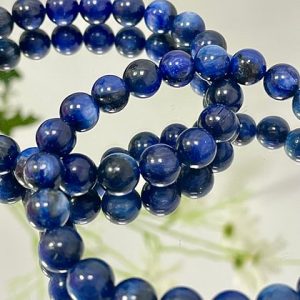Kyanite, a unique and visually stunning gemstone, is renowned for its vibrant blue color and remarkable physical properties. Its rarity, mining difficulties, and exceptional qualities contribute to its high cost. In this article, we delve into the specific factors that make kyanite a prized and expensive gemstone.
Rarity and Availability
Limited Geographic Distribution
Kyanite deposits are relatively rare and found in only a few locations worldwide. Major sources include Nepal, Brazil, Kenya, and the United States (primarily in North Carolina). The limited geographic distribution of kyanite significantly influences its rarity and, subsequently, its price.
Challenges in Mining
Mining kyanite is a complex and labor-intensive process. The gemstone often resides in geologically challenging locations, necessitating specialized equipment and techniques. These mining challenges not only limit the supply but also increase the extraction costs, contributing to the higher prices of kyanite on the market.
Physical and Chemical Properties
Unique Crystal Structure
Kyanite stands out due to its anisotropic properties. This means it has a different hardness depending on the crystallographic direction (ranging from 4.5 to 7 on the Mohs scale). This unique feature makes cutting and shaping kyanite a meticulous and skilled task, adding to its overall cost.
Color Variations
The most sought-after kyanite is the vibrant blue variety, often compared to sapphire. However, kyanite also occurs in green, orange, black, and colorless forms. The rarity of certain colors, especially the vivid blues, elevates their value and price.
Market Demand and Uses
Jewelry and Ornamental Uses
Kyanite is a popular choice for jewelry, thanks to its distinct blue hue and luster. Its use in high-end jewelry pieces adds to its market demand, influencing its price. Moreover, as a decorative stone, kyanite is used in various ornamental objects, further increasing its demand.
Metaphysical Beliefs
Kyanite is often associated with metaphysical properties, believed to offer tranquility and promote meditation. This aspect has garnered a niche but dedicated market, further impacting its price due to the demand from this sector.
Economic Factors
Processing and Crafting Costs
The processing of kyanite, including cutting and polishing, is a specialized task due to its anisotropic nature. Skilled craftsmanship is essential to handle the stone properly, which adds a significant amount to the final cost of kyanite products.
Market Fluctuations
The price of kyanite is subject to fluctuations based on market trends and the balance of supply and demand. As with any gemstone, its value can vary depending on economic conditions, fashion trends, and the gemstone market's overall health.

Conclusion
Kyanite's expense arises from a combination of its rarity, mining and processing challenges, unique physical properties, and market demand. Understanding these factors provides insight into why this gemstone holds such value and allure in the market.
For a closer look at kyanite and its varieties, you can explore the collection at Helmsman Crystal.